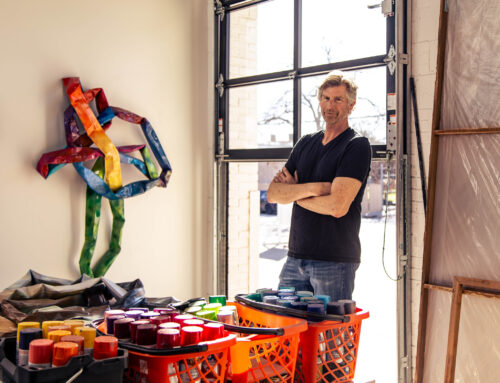Remember the days when moving into a new house caused a steady stream of neighbors to cross your front door bearing casseroles and cookies to welcome the new family? Many of us grew up knowing every family on our block, and every yard was the neighborhood playground. We ran in and out of each other’s houses, screen doors slamming behind us, a constant flow of children and activities.
Today’s neighborhoods seem to lack that sense of familiarity, though we often live in even closer proximity to one another. Could it be that in our desire to make a global mark on the world, to maintain the rank of a metropolis that matters, we have adopted the insular behavior that disconnects us from our neighbors, behavior that is often stereotypically attributed to those who live and work in the concrete canyons of Gotham?
Or could it be that people don’t feel required to interact with their neighbors in a large city? It’s much easier to ignore an anonymous stranger than establish a connection with your neighbor, but the result is a lack of community that sociologists caution leads to an increase in crime.
Small towns, by contrast, seem friendlier, perhaps because residents know each member personally. Drive through a small town, and notice how often oncoming drivers wave to each other as they pass. Residents chat while they stand in the grocery line or at the gas station, whether they know each other or not.
We can create these same bonds in our urban environment if we take the time to know our neighbors and look out for each other.
I can recall being grounded in high school in Tulsa for breaking curfew one weekend when my parents were out of town. One of my neighbors saw me driving through the neighborhood far too late for a 16-year-old and told my mother about it. Another’s concern for my safety, that I wasn’t even aware of, taught me that I wasn’t anonymous in the world and that, somehow, my mother was always going to find out when I misbehaved.
I think of that neighbor and the sense of community associated with smaller towns when I drive by the park on Thackery.
When the weather is nice, the park is a blur of motion in all four corners. Young children tumble, spin and swing at the playground, tennis players serve and volley.
The park on Thackery is Preston Hollow’s town square, its hub.
Residents congregate there and share moments in their busy lives, and it is these moments that stitch the fabric of our neighborhood together. It is there that neighbors become neighbors instead of strangers inhabiting the same geographic area. It is there that you learn the ages and names of each other’s children, pets and spouses. It is there that you offer to water someone’s yard or collect the mail when your neighbors vacation.
Every year, the Preston Hollow Women’s Club hosts an evening in the park to foster a community among those of us who live in Preston Hollow. Participating in these activities allows us to form what sociologist Herbert Gans calls an “urban village”: A place where “neighbors [are] friendly and quick to say hello to each other.”
On the next nice day, bike, jog or stroll over to Thackery Park and take the opportunity to meet our neighbors. Congregating in the park creates a small-town atmosphere in our urban environment that brings us together for the benefit of each resident. You never know – that might be your teenager out riding around long after curfew, or your lost pet returned because a neighbor recognized it, or your house that’s not burglarized because a neighbor knew you wouldn’t have a service call scheduled while you’re out of town.
Adopting small-town habits within our large-city personality will make us a metropolis, and a neighborhood, that matters.






